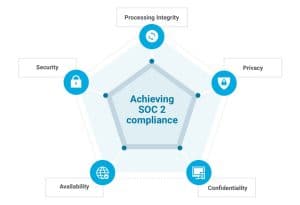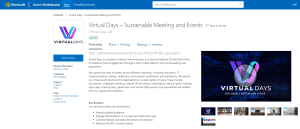Recently, remote hiring has become more popular among organizations than physical onboarding processes. Companies prefer having remote teams to expand their business operations. We cannot help but accept it as the new normal. In fact, working remotely from home is preferred and accepted by the employee base since routine travel is no longer necessary. But, with virtual hiring comes the concern for virtual onboarding and training of employees. It is certainly a challenging task for employers practicing remote hiring for the first time. For that matter, virtual events platforms support the digital onboarding processes and structured virtual training.
With the lasting impacts of Covid 19′ most companies now permanently work on a hybrid work model allowing a certain number of employees to join the workplace. On the other hand, remote teams tend to operate from their homes. The majority of people hired online have never interacted with the office staff, so they need a more focused onboarding process to gel in. So, employers need to have an efficient, seamless, and dynamic onboarding process.
What is Virtual Onboarding?
Onboarding is a tricky process on the part of the HR, who welcomes and equips employees for a particular role. These remote teams receive formal training on their job roles and an extensive introduction to the organization. But, with the online hiring of new employees comes a responsibility not to let them astray and guide them along with baby steps. The company needs to execute a virtual onboarding process with proper employee training agenda. A few basic practices to begin with are:
- Interactive orientation sessions
- Informative presentations and webinars
- Virtual office tour
- Introductory sessions
- Formal training sessions
- Online networking lounge
- On-job specific training
Digital Onboarding of Remote Employees
Over the years, we have devised strategies to systematically onboard and train the new employee teams operating remotely. We mostly use zoom and other platforms to connect with remote teams. It sure has you pull some strings before the team is in sync with the business processes. In fact, remote hiring is in itself a tricky process, and without formal training, the employee base may get astray. We don’t want that! Right? Therefore, the virtual events platforms help through the systematic integration of remote teams to familiarize them with the company and their job roles in the best way possible.
Digital onboarding of remote employees has never been better or easier. Partnering with a virtual events platform helps businesses recruit and onboard new resources efficiently and effectively. These platforms extend their features and tools to encourage seamless onboarding from first-day orientation to complete training processes.
So, let us discover how virtual platforms support the digital onboarding of remote employees for businesses wanting to operate globally.
Welcome Employees in a Branded Virtual Environment
Virtual platforms extend their custom graphics and video capabilities that allow corporations to entirely replicate the virtual environment with an on-site office look. This is your first chance to grab the attention of new hires and welcome them to a fully branded and immersive virtual environment. Let them feel at work!
In addition, virtual platforms allow companies to design custom 3D halls, lobbies, meeting rooms, auditoriums, and company representative avatars. On the top, you can fully feature your company logos, colors, themes, and entire company culture. Each department can custom design a booth to streamline training procedures. To simply, a virtual platform allows employers to welcome employees at onboarding program through:
- 3D virtual display of corporate building
- Fully branded landing page
- 3D custom designs halls, lobbies, and booths
- Departmental rep virtual avatars
- Pop-up videos in virtual lobbies
Prepare Landing Page with Event Info and Agenda
Having set up your virtual onboarding fair at a virtual platform; it is time to create a strong landing page. Your landing page must guide the remote teams to navigate the virtual space. Moreover, all the event information and agenda are shared beforehand for the attendees to keep track of the activities and sessions. Usually, the landing page has all the information regarding virtual space, webinar sessions, segments, company profile, and project agenda. You do not need to go over the board with the landing page but make sure all the essential information, material, and guidelines are put right in front of the teams.
Also, a landing page should guide trainees if some individual training sessions are scheduled for executive positions.
Post Training Guides and Assessments
The moment your trainees are acquainted with the fair, they need to be engaged in the orientation and training program. For that matter, upload onboarding guides, assessment procedures, and practical training guides. Make sure they get to save this material in the video vault and access it later when need be.
Whatever is the procedure for the training, attendees must adhere to a set schedule and attend each segment. This ensures systematic training and digital onboarding of remote employees.
Organize Live or Pre-recorded Webinar Sessions
Webinar sessions help to streamline the formal training process for the remote team. The webinars are either in the form of live presentations or pre-recorded video training sessions. It is where the employees get to engage in work-related discussions thoroughly. Here, Q&A sessions or live chat are available for the employees to clear their reservations or investigate a certain project. Also, they can ask questions about the company, directly communicate with the CEO, or inquire about their job roles.
Moreover, on-demand webinars are synced to the platform for trainees to access later at their leisure. Basically, the companies use employee onboarding software to prepare their new employee base. The project managers, organizers, or team leads are the right people to address the webinar sessions for new hires. They can communicate well and encourage their subordinates towards teamwork. So, let the colleagues mingle and learn from each other’s experiences.
Track Individual Training of Team Members
Digital onboarding offers a wholesome experience to new hires as well as employers. To keep up, it is important to track the individual training of each employee. The tracking features of the virtual platform allow employers to follow the training progress of the employees, their shortcomings, and overall success. However, some individuals might miss out on the mandatory training sessions. In such instances, we send each employee a reminder message. It is as simple as it sounds.
The platform helps track trainee attendance, booth activities, chats, queries, and overall training progress. So, the digital onboarding of remote employees keeps getting better and better.
In Conclusion
Virtual platforms have reformed the onboarding and training processes for corporations worldwide. Remote hiring has become more mainstream worldwide since training employees is no longer an issue. From role-specific training to project management guidance, new hires prepare to take hold of their responsibilities. So, take a week or months with onboarding and continue delivering successful projects and winning at revenue.
Virtual Days leverages its virtual onboarding services to help corporations easily bring their remote staff to the corporate yacht.






